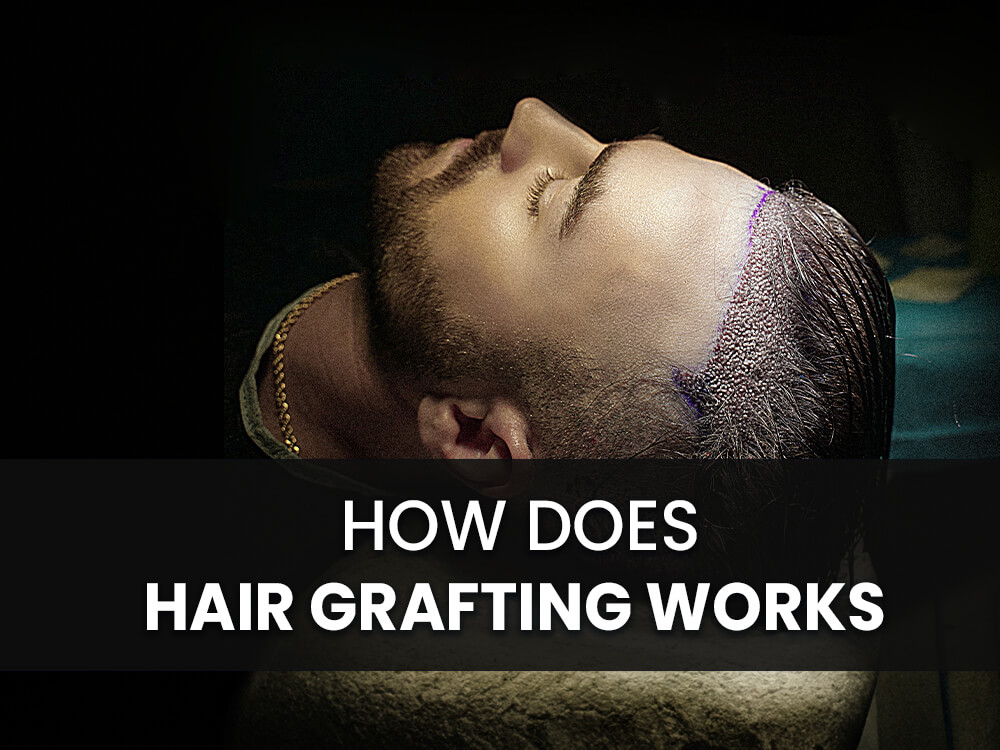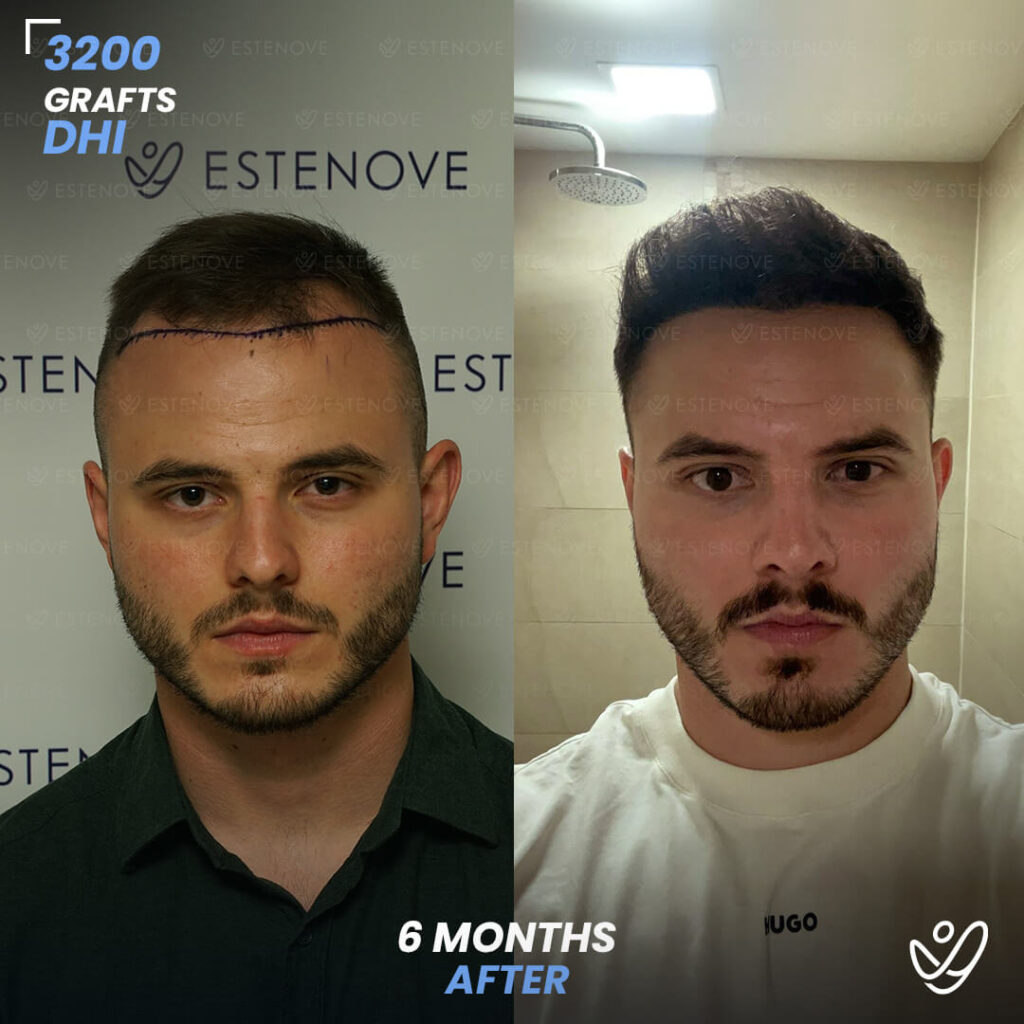
Hair grafting is a surgical procedure that involves moving hair follicles from one area of the body, typically the back or sides of the head, to a bald or thinning area. This technique is commonly used to treat hair loss caused by pattern baldness, trauma, or other medical conditions. Understanding the basics of hair grafting is essential for anyone considering this procedure.
Understanding the Basics of Hair Grafting
Hair grafting, also known as hair transplantation, is a minimally invasive procedure that aims to restore hair growth in areas where it has been lost. It is a highly effective treatment option that provides natural-looking results. To comprehend how hair grafting works, it is essential to understand the science behind the procedure and the role of hair follicles in grafting.
The Science Behind Hair Grafting
Hair grafting is based on the principle of hair follicle transplantation. Hair follicles are tiny structures beneath the surface of the scalp that produce and grow hair. These follicles contain specialized cells that are responsible for the growth and maintenance of hair. The procedure involves extracting these follicles from donor areas and implanting them into recipient areas, where hair growth is desired.
But how do these transplanted hair follicles survive and thrive in their new environment? The success of hair grafting relies on the body’s natural ability to heal and regenerate. Once transplanted, the hair follicles establish a new blood supply and begin to produce hair in the recipient area. This process, known as angiogenesis, is crucial for the survival of the transplanted follicles.
Furthermore, the transplanted hair continues to grow and shed naturally, just like the rest of the hair on the scalp. This means that individuals who undergo hair grafting can expect their transplanted hair to blend seamlessly with their existing hair, creating a natural and undetectable result.
The Role of Hair Follicles in Grafting
Hair follicles play a crucial role in the success of hair grafting. The follicles selected for transplantation are carefully chosen based on their quality, thickness, and growth potential. These factors determine the overall outcome of the procedure.
During the hair grafting procedure, small punches or incisions are made in the recipient area to create space for the transplanted follicles. The extracted follicles are then strategically placed in these incisions to achieve a natural hairline and overall aesthetic appearance. The skill and experience of the surgeon are essential in determining the success of the grafting process.
It is worth noting that hair grafting is a highly customizable procedure. The surgeon can adjust the angle, direction, and density of the transplanted hair follicles to create a result that is tailored to the individual’s unique facial features and desired outcome. This level of customization ensures that the transplanted hair blends seamlessly with the existing hair, creating a natural and harmonious appearance.
Calculate the number of grafts needed for your hair transplant and get an estimated cost for various destinations. Try graft calculator
The Hair Grafting Procedure
The hair grafting procedure is a meticulously planned process that involves several steps. Before undergoing the procedure, proper preparation and understanding of the process are essential. Let’s take a closer look at the pre-procedure preparations and the step-by-step process of hair grafting.
Pre-Procedure Preparations
Prior to the hair grafting procedure, the surgeon will evaluate the patient’s medical history, examine the donor and recipient areas, and discuss the expectations and goals of the surgery. Blood tests may be conducted to ensure that the patient is in good health and a suitable candidate for the procedure.
The patient will be advised to discontinue any medication or supplements that may interfere with the surgery or recovery process. Additionally, the surgeon may provide instructions regarding the patient’s diet, alcohol consumption, and smoking habits. Following these pre-procedure guidelines is crucial for optimizing the results and minimizing any potential risks.
Step-by-Step Process of Hair Grafting
The hair grafting procedure typically takes place in an outpatient setting, under local anesthesia. In some cases, intravenous sedation may also be administered to ensure patient comfort throughout the procedure. The detailed step-by-step process of hair grafting includes:
- Anesthesia: The surgeon administers local anesthesia to numb the donor and recipient areas. This ensures that the patient experiences minimal discomfort during the procedure.
- Donor Area Preparation: The surgeon prepares the donor area, typically the back or sides of the head, by trimming the hair to facilitate graft extraction.
- Follicle Extraction: Using specialized instruments, the surgeon carefully extracts individual hair follicles from the donor area. This process involves precision and attention to detail to ensure the preservation of follicle integrity.
- Recipient Area Preparation: The surgeon creates small incisions or recipient sites in the bald or thinning area. These incisions are strategically placed to achieve a natural-looking hairline and overall aesthetic result.
- Graft Placement: The extracted follicles are meticulously placed into the recipient sites. The surgeon ensures that the direction, angle, and density of the transplanted hair follicles match the natural hair growth pattern.
The duration of the hair grafting procedure depends on the number of grafts required and the complexity of the case. It may range from a few hours to several sessions spread over multiple days. The surgeon will provide post-procedure instructions and prescribe medication, if necessary, to aid in the healing process.
Different Types of Hair Grafting Techniques
Hair grafting techniques have evolved over the years, offering patients various options to choose from. The most commonly used techniques are Follicular Unit Transplantation (FUT) and Follicular Unit Extraction (FUE) and Direct Hair Implantation (DHI).
Follicular Unit Transplantation (FUT)
Follicular Unit Transplantation, also known as strip harvesting, involves removing a strip of scalp tissue from the donor area. The strip is then dissected into individual follicular units, which are transplanted into the recipient area. FUT is suitable for patients who require a large number of grafts and allows for more precise placement of the follicles.
Follicular Unit Extraction (FUE)
Follicular Unit Extraction is a newer technique that involves extracting individual follicular units directly from the donor area, using specialized instruments. These follicles are then transplanted into the recipient area. FUE is a preferred choice for patients looking for a less invasive procedure, minimal scarring, and quicker recovery time.
Direct Hair Implantation (DHI)
DHI involves extracting hair follicles from the donor area and implanting them directly into the recipient area without the need for incisions or stitches. This procedure uses a specialized tool called a Choi pen, which allows for precise control over the depth, angle, and direction of the implanted hair.
The Recovery Process After Hair Grafting
Following the hair grafting procedure, proper care and maintenance are crucial for optimal healing and long-term success. The recovery process can be divided into immediate post-procedure care and long-term care. Check out Hair Transplant Before & After Gallery to see the results.
Immediate Post-Procedure Care
After the hair grafting procedure, the patient may experience mild swelling, tenderness, and some crusting around the grafts. The surgeon will provide specific instructions on how to care for the newly transplanted hair. These may include:
- Minimizing physical activity and avoiding strenuous exercise for a few days
- Avoiding direct sun exposure and wearing a hat or sunscreen to protect the grafts
- Using prescribed medications or over-the-counter pain relievers to manage any discomfort
- Following a gentle hair washing routine as advised by the surgeon
It is important to closely follow the post-procedure care instructions to minimize the risk of complications and ensure the best possible outcome.
Long-Term Care and Maintenance
While hair grafting provides lasting results, maintaining the transplanted hair requires ongoing care. It is crucial to adopt a healthy lifestyle, including a well-balanced diet and regular exercise, to support optimal hair growth.
The surgeon may provide recommendations on hair care products, scalp hygiene, and styling techniques to promote the health and longevity of the transplanted hair. Regular follow-up visits with the surgeon will allow for monitoring of the progress and addressing any concerns that may arise.
Evaluating the Success of Hair Grafting
The success of hair grafting depends on several factors and can vary from person to person. Evaluating the success of the procedure involves considering both objective measurements and subjective satisfaction.
Factors Influencing Hair Grafting Success
Various factors can influence the success of hair grafting, including the patient’s age, overall health, extent of hair loss, and the skill of the surgeon. The availability of an adequate donor area and realistic expectations also play a significant role in determining the outcome of the procedure.
How to Measure Hair Grafting Results
Measuring the success of hair grafting involves assessing the hair density, coverage, and natural appearance of the transplanted hair. It may take several months for the transplanted hair to grow and blend seamlessly with the existing hair. The final results can be evaluated based on the patient’s satisfaction and the achievement of the desired aesthetic outcome.
Check out the hair transplant recovery timeline or visit the articles below:
- First Month After Hair Transplant
- Hair Transplant After 3 Months
- Hair Transplant After 6 Months
- Hair Transplant After 9 Months
- Hair Transplant After 1 Year
In conclusion, hair grafting is a proven technique for addressing hair loss and restoring natural-looking hair growth. This procedure involves extracting hair follicles from a donor area and transplanting them into a bald or thinning area. Understanding the basics of hair grafting, the procedure itself, the different techniques available, and the recovery process is essential for anyone considering this surgical option. Consulting with an experienced hair transplant surgeon can provide personalized guidance and ensure the best possible results. With proper care and maintenance, hair grafting can help individuals regain their confidence and enjoy a fuller head of hair.

















